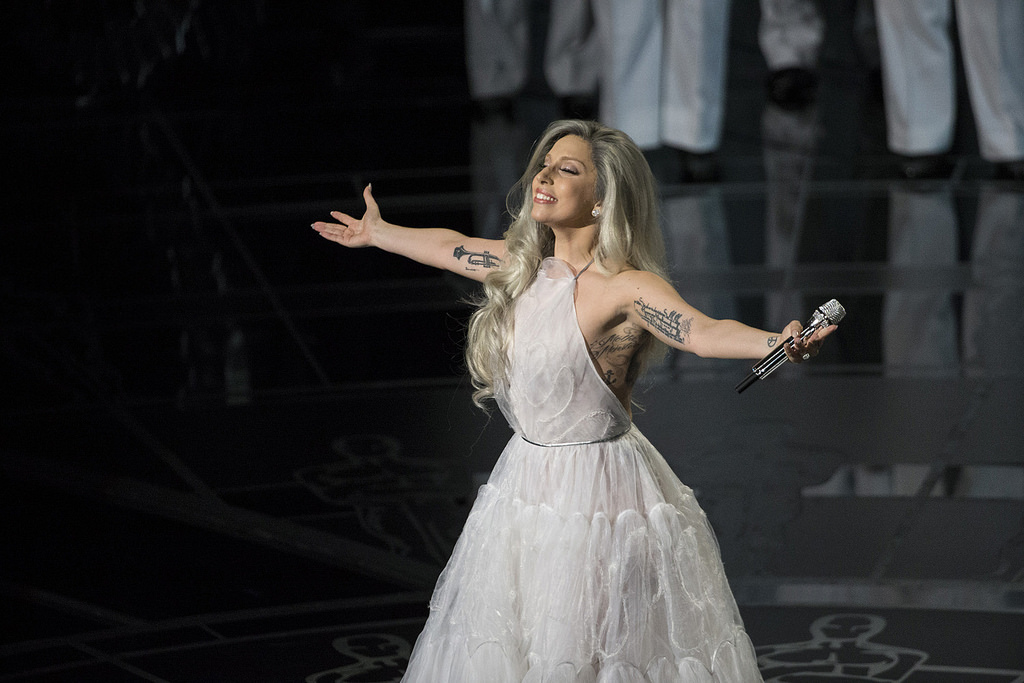After years of red carpet commotion and outrageous performances in which concerts were elevated to spectacles, the public has grown to expect nothing but the abnormal from Lady Gaga. Naturally the only thing that could surprise Lady Gaga’s little monsters is normalcy, and herein lies the genius of Joanne. The album is normal. Joanne is straightforward without gimmicks or Gaga antics. It’s a reminder that underneath the various wigs and strip steak dresses lies a truly talented vocal artist.
Stripped of the synths in her prior works, Joanne opts to highlight Gaga’s formidable vocal chops on a toned down, often acoustic platform. She immediately stuns in “Diamond Heart” when a suspenseful bass drum heralds her effortless belts in the bridge and chorus. Even though it’s vocal-centric and lacks the usual pageantry, Joanne is still characteristically Gaga in many ways. Her lyrics have the same eyebrow-raising eccentricity, often defiant and insinuative. “Dancing in Circles” is evidence that Gaga’s affinity for the mysterious and burlesque remains. It is a track with a hypnotic and stormy chant, “Tap down those boots while I beat around, funk me downtown.” In “A-YO, ” Gaga sings sassily over an enrapturing, syncopated clap, producing a song as maddeningly catchy as a track off Born This Way. However, “Dancing in Circles” and “A-Yo” are the closest Joanne gets to anything from Gaga’s past.
“Sinner’s Prayer” is the most drastic departure from Gaga’s first three albums, but a triumph for that very reason. Unlike “John Wayne”s wistful attempt to establish Gaga’s new sound in a Western, Cowboy-esque lineage, “Sinner’s Prayer” does just that, soaring in its simplicity and sincerity. Gaga sounds breezy and content, not trying to push boundaries or prove herself with lofty themes or experimentation. It gives a peek into the Gaga the world always wished it knew, Stefani Germanotta before the fame monster snatched her up.
As refreshing as Joanne is, it has trouble satisfying because of its shallowness. Even “Joanne,” a ballad about Gaga’s deceased aunt, who has a special place in her heart as a fellow sexual assault survivor, feels deracinated from emotion; she struggles to be vulnerable, leaving the song hollow. The same occurs when Gaga sings about the death of Trayvon Martin in “Angel Down.” What could be acutely impactful is only a bit disconcerting. The greatest difficulty for Joanne are these attempts to be salient and sentimental, while remaining popish and accessible. Could Gaga have provided more lyrical substance, Joanne might not have failed in delivering a passionate blow.
If Joanne’s intention was to unmask its maker, to deconstruct Stefani Germanotta as a self-proclaimed “monster,” it still leaves many questions unanswered. Is Joanne an honest attempt to reign in the freakish and a humble consequence of ARTPOP’s underwhelming reception? Or has such an album been part of Gaga’s professional trajectory from the beginning, simply a calculated maneuver to stay relevant? Has the fame monster relinquished its grasp or finally consumed her?
Only time will tell if Mother Monster is permanently back on earth, or simply passing through before she departs to another planet of abstract and ostentatious pop.





